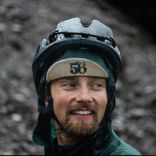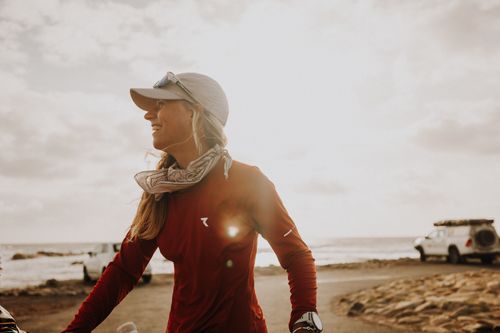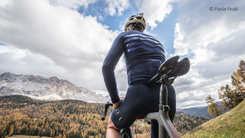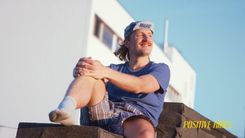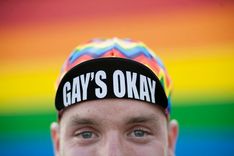Wiebke Lühmann's job is riding a bike. And oh well, she rides a lot!
Just recently she went from her home in Freiburg, Germany all the way to the Cape of Good Hope in Capetown, South Africa.
The stats? Mind blowing.
- Distance: 20,150 kilometers
- Elevation gain: 136,000 meters
- Countries visited: 22
- Total riding time: 1,152 hours
- Days on the road: 430
- Riding days: 283
- Rest / sick / logistics days: 147
- Average riding time per day: 4 hours
- Average kilometers per riding day: 71 km
- Distance by bus/hitchhiking: approx. 1,000 km
- Weight of bike, gear, food & water: approx. 30 kg (estimated)
Her weapon of choice?
A custom built Wilier Adlar.
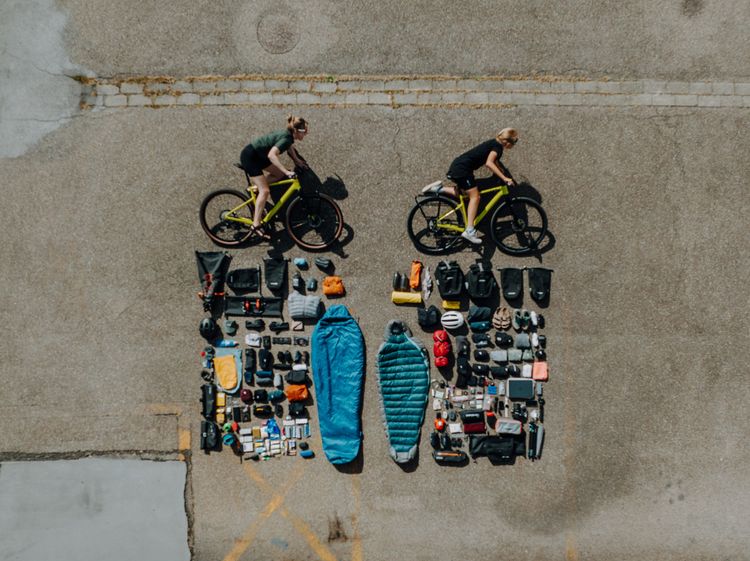
She didn't start this trip to chase records, she says herself she did it to see more of our planet and to have encounters with a lot of interesting people along the way.
She took off on the 3rd of October in 2023 and arrived in Capetown 14 months later. On the 5th of December 2024.
The first few weeks she was joined by a friend and in the Saharan desert she met a travel companion. First they crossed paths a few time until they decided to travel together with some interruptions.
She wasn't alone all the way, but still travelling that far and especially far from home takes it's toll at some point.
After 15.000km in Kongo, 5000km from her destination she reached a rough spot. Wanting to quit and just go home.
Eventually after 10 days of rest she continued and cycled all the way to her destination at the Cape of Good Hope!
I first met Wiebke during a gathering with Ortlieb Ambassadors.
Wiebke is such a positive person with a strong presence. We talked for a long time and quite quickly you realize what looks so easy and natural is her job and she's a role model for all of us.
Now this journey of hers gave me the perfect excuse to ask Wiebke for a little portrait.
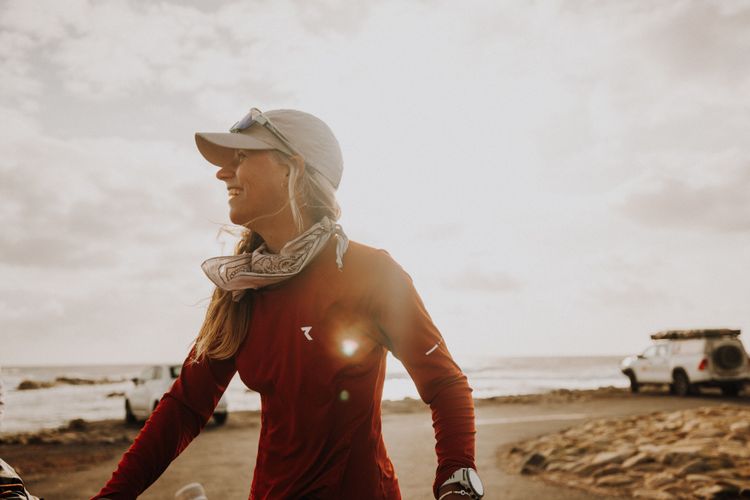
Stats!
How long did the trip to Cape Town take, how many kilometers was it, and how far did you ride on average each day? Favorite snack? Any mechanicals?
The journey took a total of 430 days, of which I spent 283 days actually riding – nearly 10 months of ride time.
I cycled 20,150 kilometers and climbed about 136,000 vertical meters.
On average, that’s 71 kilometers per riding day, with 4 hours of riding per day.
Mechanicals? Zero flats!
My bike (a Wilier Triestina Adlar gravel bike) never let me down – a loyal companion, even on the toughest stages.
Favorite snack on the road? Bread with Nutella or peanut butter – perfect for quick energy!
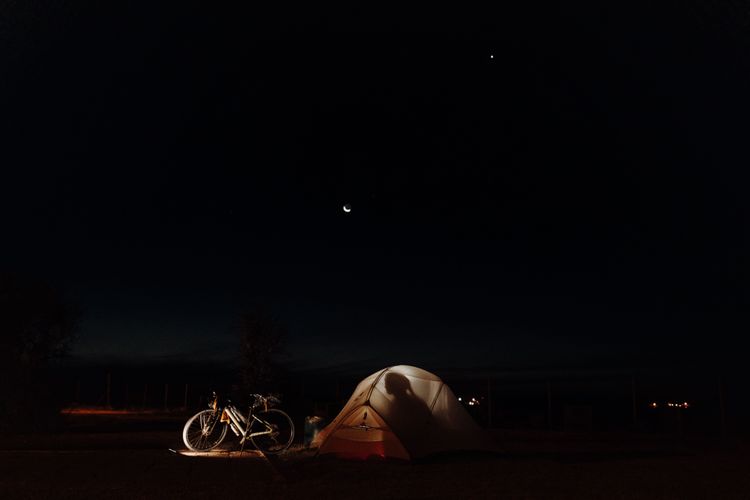
This trip seems unbelievable from so many perspectives. Even by plane, most people never travel this far from home! What sparked the idea?
The idea for such a long journey actually came during my first bike trip in South America.
Back then, I cycled "only" 7 months and 7,000 kilometers, but I met countless inspiring people who had spent several years riding from Alaska to Patagonia or from Colombia to the southern tip of Argentina.
After a few years' break, I decided to take on another big journey myself.
When I stood at North Cape in August 2022, the northernmost point in Europe, I thought:
Why not ride all the way to the southernmost point of Africa?
That way, I could travel from north to south across two continents.
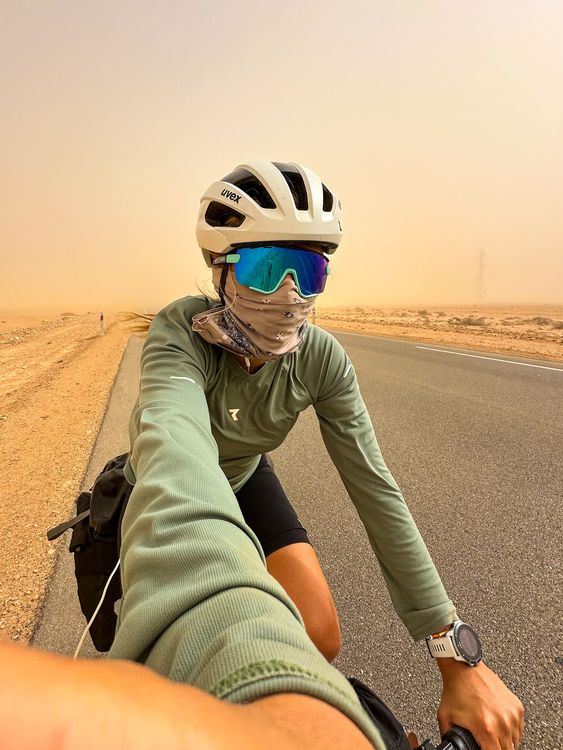
How long did you prepare for it? And how? What skills do you need?
Intensive prep took just a few weeks: doctor’s appointments, vaccine consultations, passport renewal, and international health insurance.
The longer-term prep was mostly mental: quitting my job, giving up my apartment, storing my belongings, and clearing my calendar for the next 15 months.
How to prepare? Stay relaxed.
If something goes wrong, there are always options – including the option to come home. That alone is a huge privilege.
Then, of course: find the right bike, gather gear, and plan the route.
Macro-planning is key: Where do I want to start and end? How long will it take? What do I need?
The micro-planning happens day to day – and I highly recommend that approach. Not over-planning is part of the freedom for me.
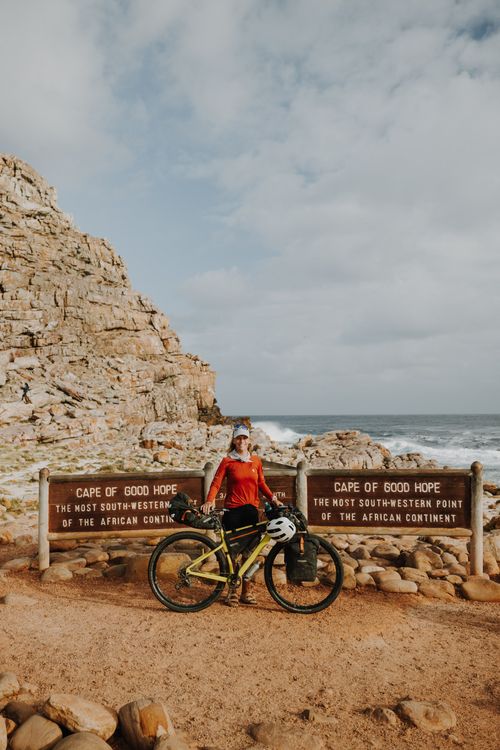
Stepping back a bit: You weren’t new to cycling when this started. How long have you been riding, and how did it begin?
I’ve been road cycling since 2016 – I started during university and quickly fell in love.
Thanks to my South America trip, I found my way into the bike travel community, which felt even more like home than the traditional road cycling scene.
Along the way, I also got into triathlon.
Each style of cycling has taught me something new, and I keep rediscovering the joy of movement and that unique feeling of freedom I find on the road.
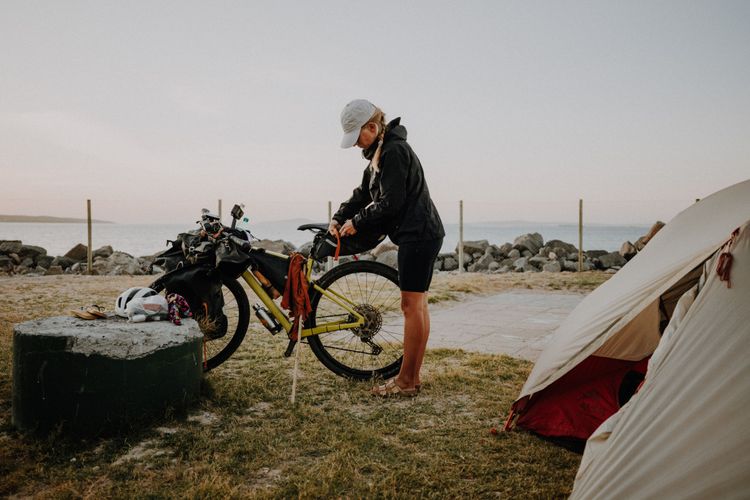
Cycling and projects like riding from home to Cape Town are your job now! And quite an unusual one. We often only see the inspiring stories on social media – but what does this actually mean for you, and what kind of work goes into calling this your profession?
I started sharing my trips on social media fairly early and ended up in a cool niche at just the right time.
I always loved the creative aspect, but also the community interaction and trying out new things.
Getting to work with brands was pure luck at the beginning, but I was able to grow those collaborations.
Now, they support me on bigger projects – like my dream of turning this journey into a documentary film.
In the end, it’s a mix of luck, persistence, and a good eye for photo and video storytelling.
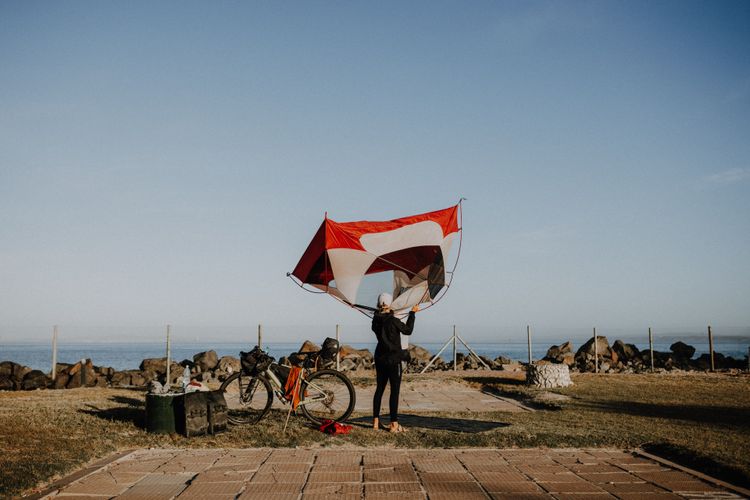
Africa still symbolizes adventure – but also danger – for many Europeans: wild animals, unstable countries, lack of infrastructure, disease... How did you prepare, and what surprised you the most?
I didn’t encounter wild animals until after 16,000 kilometers – somewhere in Namibia.
Just because tourists and TV talk about colorful safaris doesn’t mean elephants and giraffes are everywhere across the continent. Quite the opposite, unfortunately.
Decades of civil war have left very little wildlife in parts of West Africa.
Infrastructure is different, but not necessarily harder: in many places, there’s just one main road – no GPS needed. I had no trouble navigating.
And if I ever wasn’t sure, people around me always knew the way.
Health-wise, I was lucky. I took malaria prophylaxis for 6 months and stayed malaria-free – a huge relief mentally and physically.
There were occasional food issues, but nothing major.
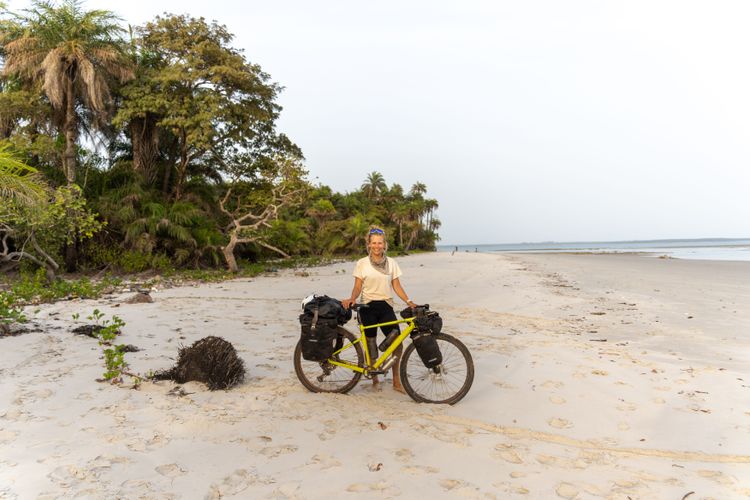
Which country or landscape surprised you the most?
Guinea-Bissau.
Dreamy, deserted beaches on small islands, chimpanzees in the trees, and kind locals. What more could you want?
Most beautiful experience?
The endless horizons of the desert, combined with a sense of lightness I felt toward the end of the journey in Namibia.
Biggest challenge?
Overcoming an emotional low in Congo – not listening to voices from home telling me to stop, and deciding to keep going.
That was a tough call, but I’m glad I pushed through.
You’re an important role model for FLINTA* folks, who are still underrepresented in the outdoor scene. What’s your most important advice for everyone (FLINTA, men, brands) to help create more balance?
Support each other. Connect. Cheer each other on.
There’s no competition.
We’re all stronger when everyone is out there, looking beyond their own bubble.
We can learn so much from one another.
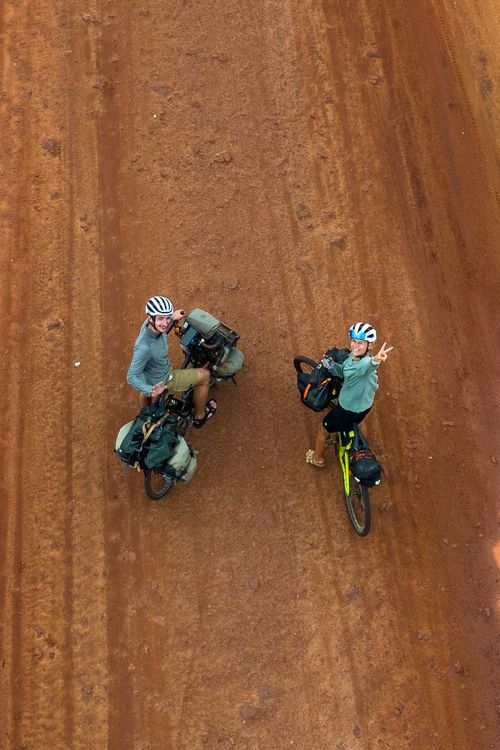
What’s one question or comment men should absolutely stop making – and why?
Projecting their own fears onto FLINTA.
It just paints scary pictures and reinforces fear – which doesn’t help women feel any safer. So please, just stop.
We women already hit the jackpot globally. We have freedoms, rights – why shouldn’t we use them to show others it’s possible?
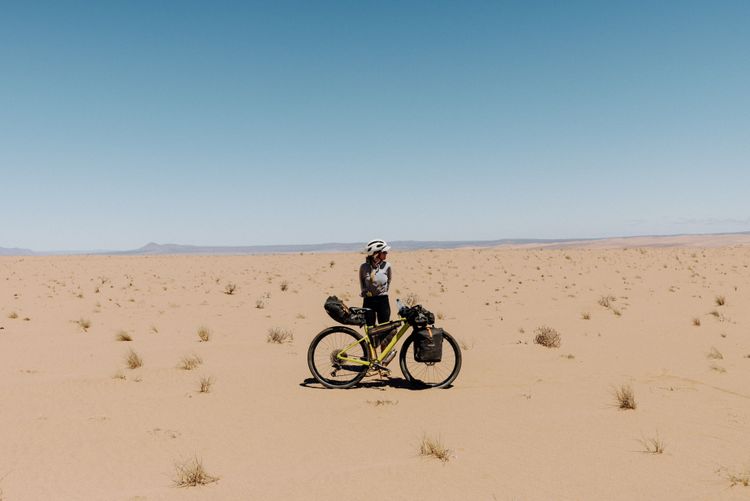
What would you tell other FLINTA who want to realize their own big project?
Just go for it!
You can adjust and replan everything along the way – the main thing is to start.
If doing it alone feels too scary, having good friends, supporters, or travel partners can make all the difference.
What’s next? Have you settled back in?
I haven’t settled back in yet – I’m still visiting family and friends, in-between places.
I’ll move into a shared apartment in Freiburg in March, and then I’ll dive into writing a book and co-producing a film with my friend Fabienne Engel.
What’s something you didn’t realize you valued until you were away for so long?
Privacy.
Just being able to shut a door – regularly!
On the road, sleeping in a tent or even in hotels, I often couldn’t fully rest – mosquitos, heat, power outages, or bad soundproofing would wear me down. That combo really pushed my limits at times.
Your wildest prediction for 2025?
The world will be less online and more offline.
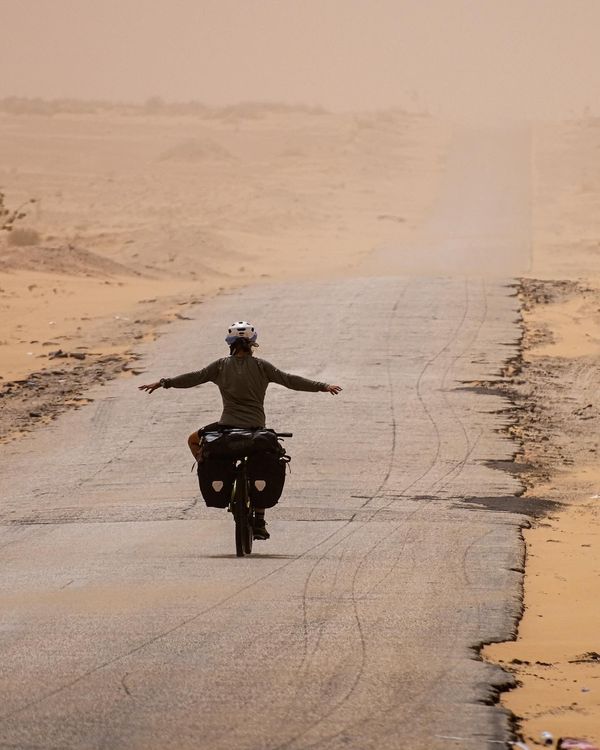
Any final shoutouts?
Thanks to everyone who supported, hosted, helped, or encouraged me along the way.
I stayed with amazing people, made meaningful connections, and felt so much support. Truly priceless!
Thank you Wiebke for sharing details and stories about your journey and being available for this Portrait!
I have her answers and all the content since quite a while and I am sorry I haven't published this earlier, however I feel this is a story that is always relevant and hopefully her life and the dedication and passion she is putting into her projects will inspire a few more FLINTA to go out and realize their own trip!
Way to go Wiebke!
